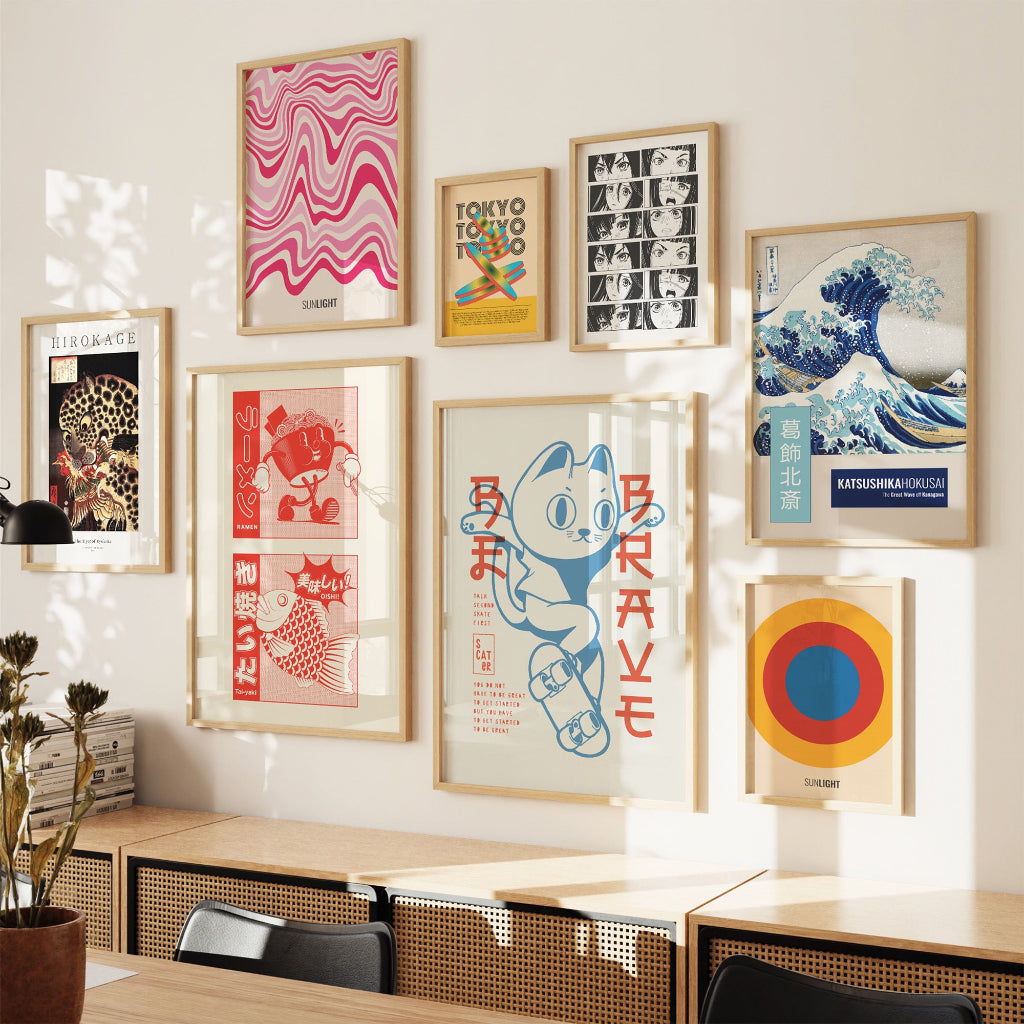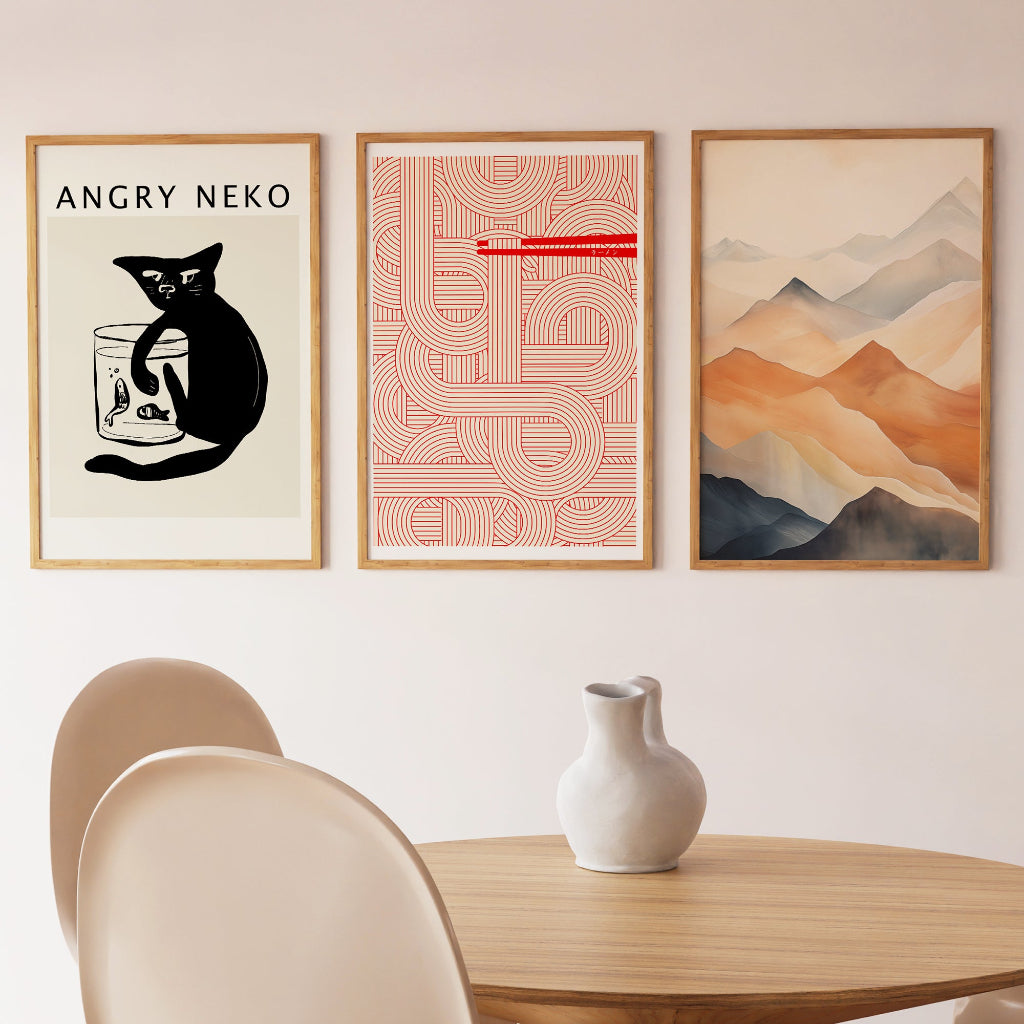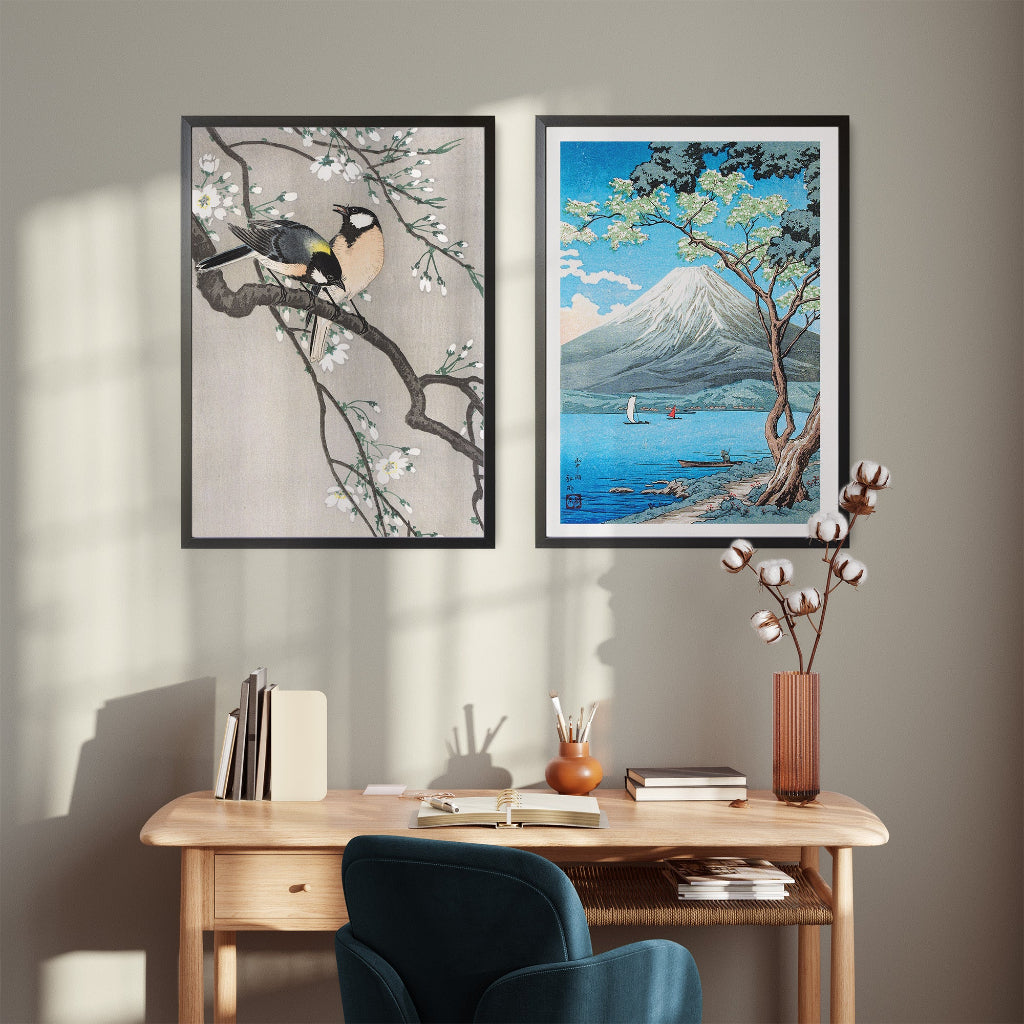
Memorial portrait of Utagawa Hiroshige by Kunisada
Utagawa Hiroshige (1797–1858), also known as Andō Hiroshige, was one of the last great masters of Japanese Ukiyo-e woodblock prints, particularly celebrated for his poetic and atmospheric landscapes.
Born in Edo (now Tokyo) into a samurai family, he inherited his father's position as a fire warden but was drawn to art from a young age. Around 1811, he joined the studio of Utagawa Toyohiro, a respected Ukiyo-e artist. Hiroshige initially created prints of traditional subjects like beautiful women (bijin-ga) and actors (yakusha-e), but he found his true calling in landscape art. His breakthrough came with the series 'The Fifty-three Stations of the Tōkaidō' (Tōkaidō Gojūsan-tsugi), published in the early 1830s. This series, depicting the scenic views and bustling life along the main road connecting Edo and Kyoto, was an immense success and established him as a leading landscape artist, rivaling his contemporary Katsushika Hokusai. While Hokusai's landscapes were often characterized by bold compositions and dramatic power, Hiroshige's style was generally more lyrical, emphasizing mood, weather condition . . . Read More >>

Memorial portrait of Utagawa Hiroshige by Kunisada
Utagawa Hiroshige (1797–1858), also known as Andō Hiroshige, was one of the last great masters of Japanese Ukiyo-e woodblock prints, particularly celebrated for his poetic and atmospheric landscapes.
Born in Edo (now Tokyo) into a samurai family, he inherited his father's position as a fire warden but was drawn to art from a young age. Around 1811, he joined the studio of Utagawa Toyohiro, a respected Ukiyo-e artist. Hiroshige initially created prints of traditional subjects like beautiful women (bijin-ga) and actors (yakusha-e), but he found his true calling in landscape art. His breakthrough came with the series 'The Fifty-three Stations of the Tōkaidō' (Tōkaidō Gojūsan-tsugi), published in the early 1830s. This series, depicting the scenic views and bustling life along the main road connecting Edo and Kyoto, was an immense success and established him as a leading landscape artist, rivaling his contemporary Katsushika Hokusai. While Hokusai's landscapes were often characterized by bold compositions and dramatic power, Hiroshige's style was generally more lyrical, emphasizing mood, weather conditions (rain, snow, mist), and the subtle beauty of nature. He had a remarkable ability to capture the feeling of a specific place at a particular moment. His prints often feature travelers, conveying a sense of journey and human presence within the vastness of nature.
Following the success of the Tōkaidō series, Hiroshige produced numerous other influential landscape series, including 'Famous Views of the Sixty-odd Provinces', 'One Hundred Famous Views of Edo' (Meisho Edo Hyakkei), and various other series depicting famous places in Japan. 'One Hundred Famous Views of Edo,' created in his later years, is particularly noted for its innovative compositions, often using foreground elements to frame distant views and creating a sense of depth and perspective.
He was incredibly prolific, creating over 5,000 print designs in his lifetime. Hiroshige was also skilled in kachō-e (bird-and-flower pictures), which are admired for their delicate beauty and poetic sensibility. His work had a profound impact on Western artists of the Impressionist and Post-Impressionist movements, including Vincent van Gogh, Claude Monet, and James McNeill Whistler, who were inspired by his compositions, use of color, and depiction of everyday scenes. Van Gogh, for instance, famously copied several of Hiroshige's prints.
Hiroshige's legacy is that of an artist who brought a new level of poetry and intimacy to Ukiyo-e landscape art, creating enduring images that continue to captivate viewers with their beauty, tranquility, and masterful depiction of Japan's natural and urban environments.
If you want to know more about the artist: Hiroshige - Wikipedia
<< Read Less




























